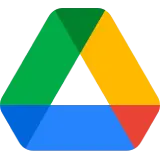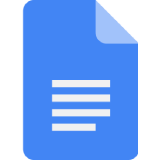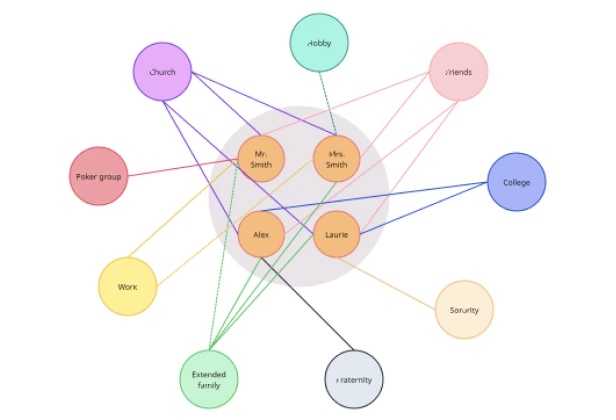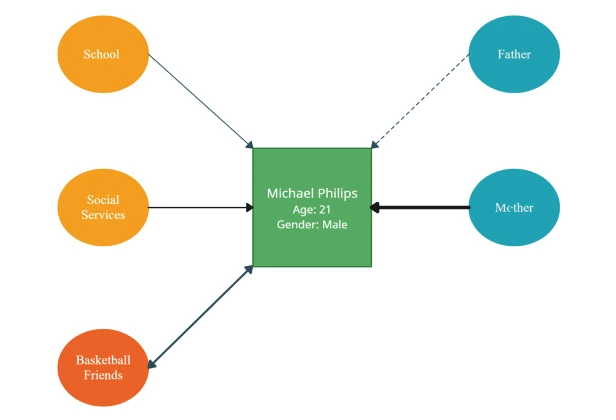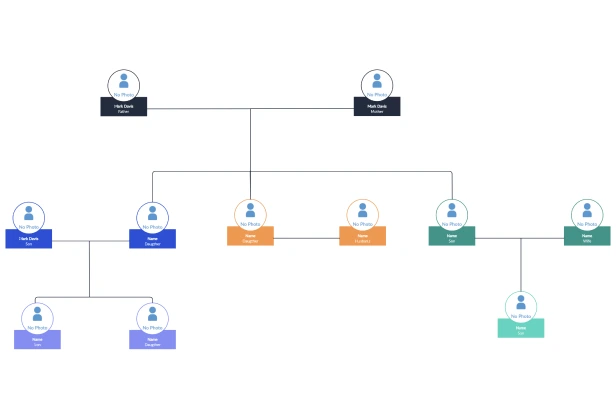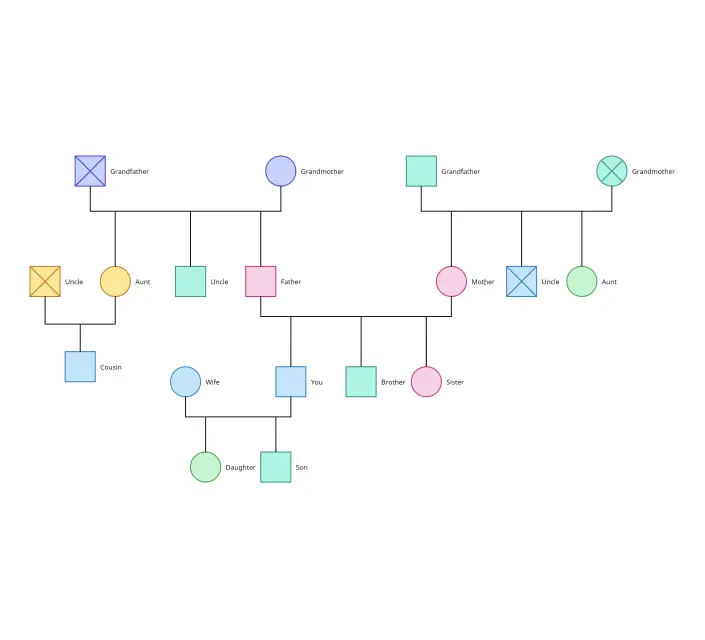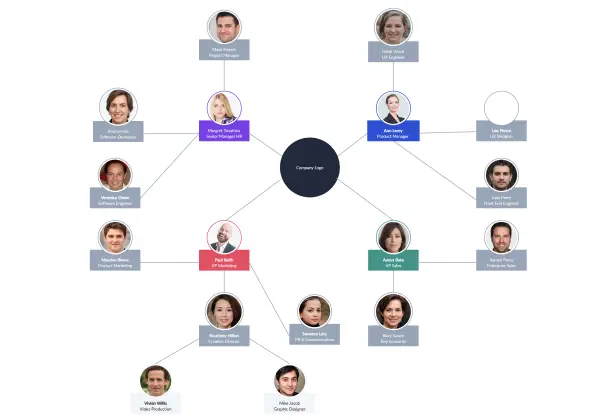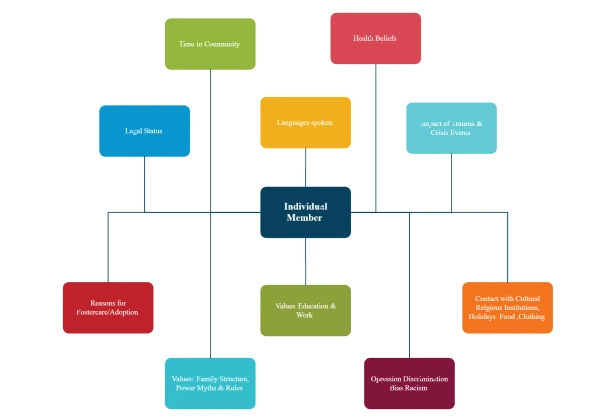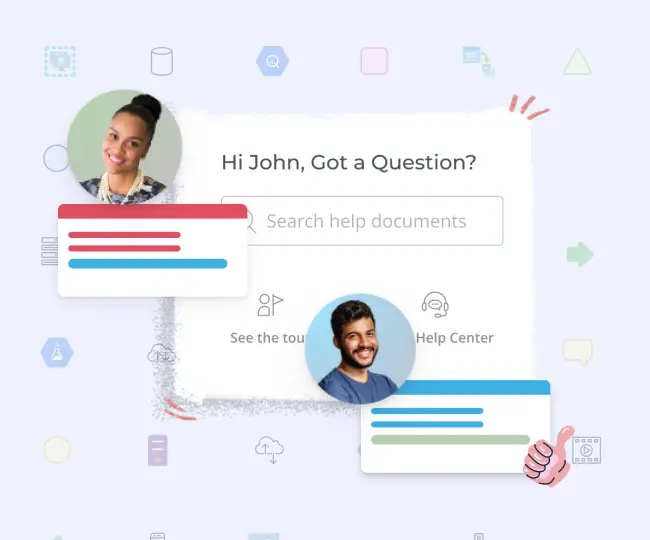Ecomap Template
Easily Study and Explore Family Systems
A single, connected workspace to bring together data, people, and research to streamline counseling and social work assessment.
- Get a headstart with customizable ecomap templates
- Real-time visual collaboration to work with clients
- PNG, SVG, and PDF export for sharing and publishing
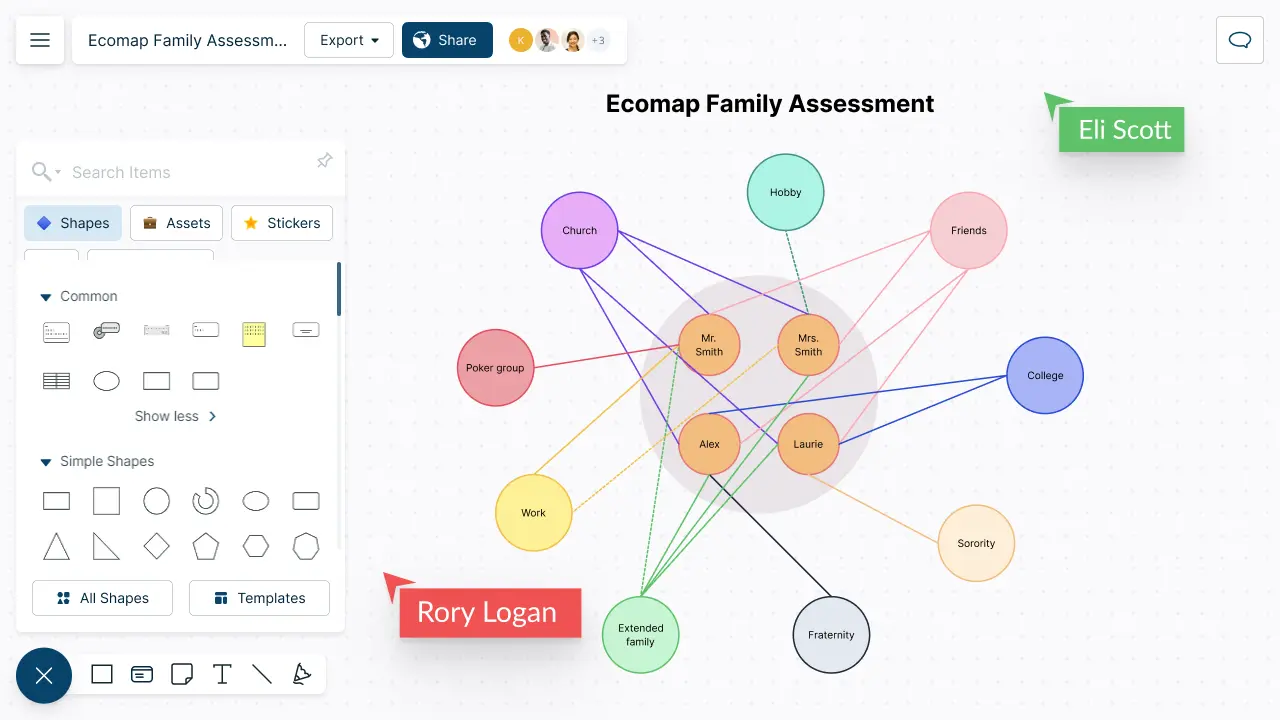
- Get a headstart with customizable ecomap templates
- Real-time visual collaboration to work with clients
- PNG, SVG, and PDF export for sharing and publishing

How to make an Ecomap?
Ecomap Templates to Understand and Discover Social Dynamics
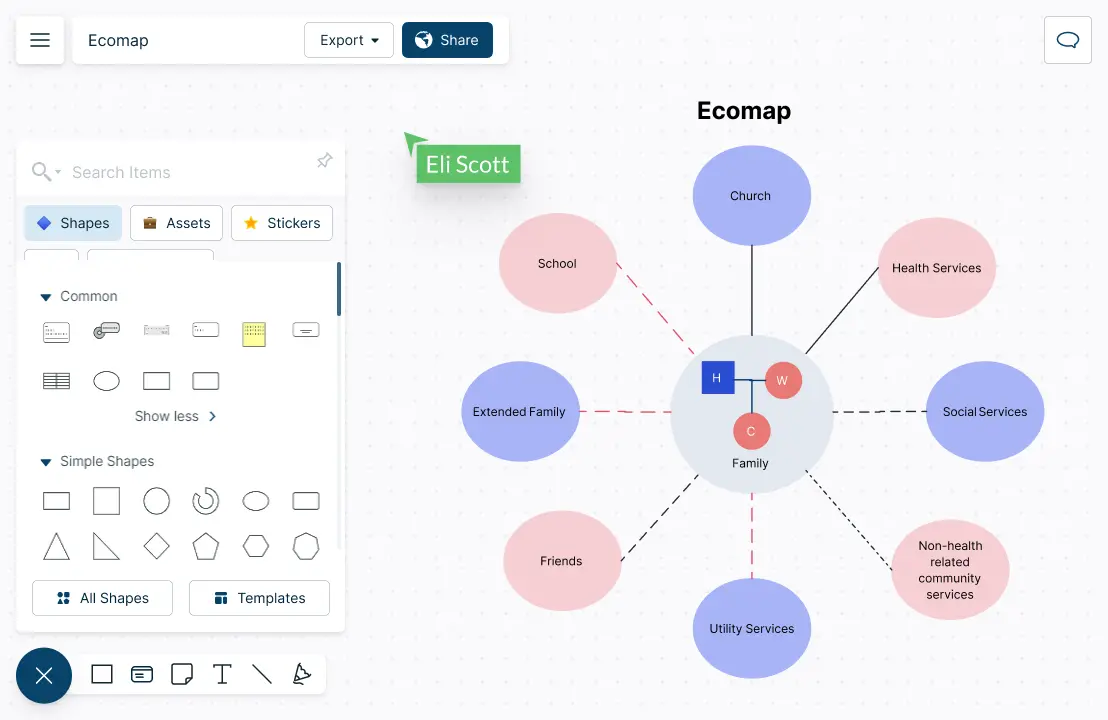
Create ecomaps in minutes with customized templates

Quickly start mapping your client’s family ecological system with pre-made ecomap templates. Understand the family dynamics and their connection to the community better.
Centralize and organize your research data
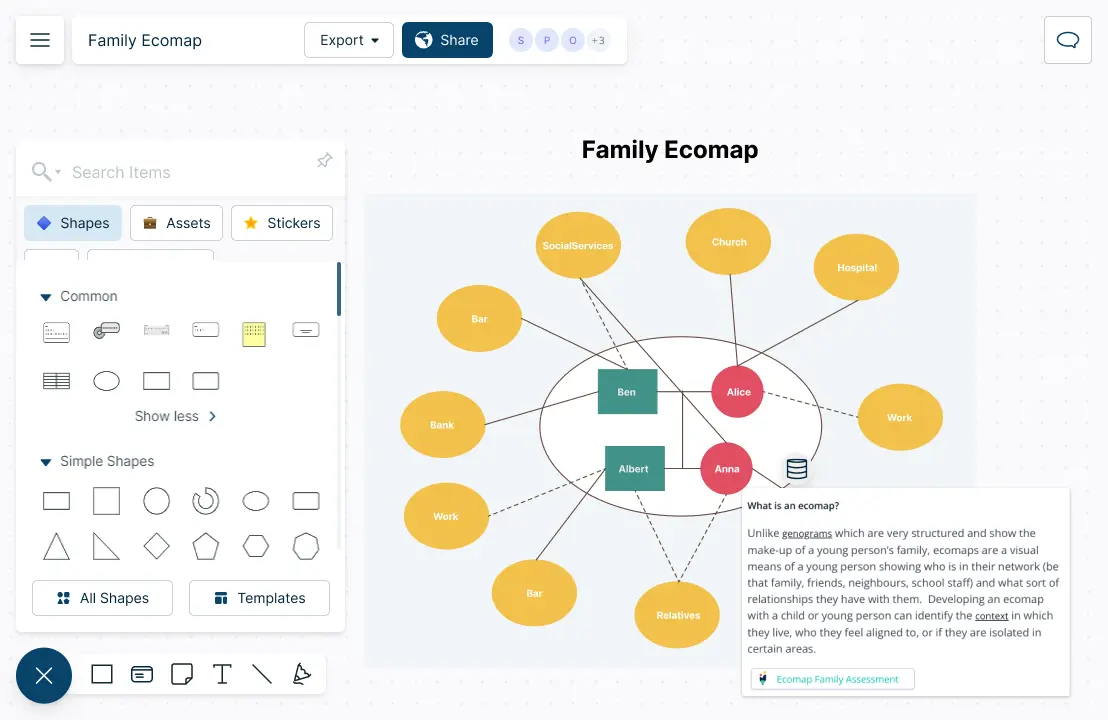
Link information for easy analysis by embedding all information, including documents, records, and assets, under one workspace or in the infinite canvas. Organize the gathered data in workspaces and folders for quick access and sorting.


Build interactive and data-rich ecomaps

Assess the family, social, and community relationships by creating ecomaps using the extensive shape library and dynamic connectors. Convert ecomap findings to family trees, genograms, and hierarchical charts to create different perspectives.
Easily collaborate with your team in real-time

Discuss and analyze relationships with colleagues, family members, clients, and peer researchers on one shared canvas with synced previews and live mouse tracking. Use contextual comments to share feedback.

Why is an Ecomap Important?
Ecomaps (or eco maps) are helpful, especially in assessing family, social, and community relationships. It is a visual map that shows an individual’s or a family’s connection to the external world. Employed mainly by social workers, it is a great way to get a clear and detailed picture of a client’s social and family relationships. By mapping the dynamics of these relationships, one can try to see if any disconnections or concerns lead to an unhealthy family life. Other advantages of using an ecomap include:
- Helps to determine a family’s strengths, resources, needs, and deficiencies
- Shows how a person’s connections influence an environment and how they are sustained and developed
- Provides a starting point for conversation and a useful framework to get the work started
- Helps you to understand what and to what extent you require information
- Helps to identify emerging issues and themes
- Provides an understanding regarding areas of service duplication
However, the usage of ecomaps is now no longer limited to social workers. It is used in various disciplines to understand an ecosystem, how an individual interacts with an ecosystem, resource availability, client or community requirements, and much more.
What are the Types of Ecomap Templates?
There are many ecomap examples and templates that can be used depending on the situation and your requirement. The most common types of ecomap templates are:
- Family ecomap templates
- Social work ecomap templates
More specific templates include,
- Parent-child ecomap
- Child ecomap
- Ecomap for seniors
- Ecomap for social relationships
- Individual ecomap example
- Ecomap for family service plan
- Ecomap for family health assessment
How to Use an Ecomap Collaboratively?
Ecomaps can be used in a collaborative setting, involving the individuals or family members themselves, to gather information and gain insights into their strengths, challenges, and relationships more effectively.
Here’s how you can use ecomaps collaboratively:
- Collaborative information gathering
Focus on the underlying assumptions and beliefs that shape the design and plan for a program. These models offer a comprehensive explanation of the rationale behind the initiation of a particular program idea.
- Joint problem-solving
While an ecomap template visualizes the challenges and strengths within a family or group, it help encourage discussion around potential solutions to the problems as well. This way you can easily identify the resources and support systems needed to address the needs of the individuals.
- Joint decision-making
The ecomap template is a useful decision-making tool, as it helps individuals to consider different options and their potential impact on the relationships and systems represented in the map.
- Building consensus
Ecomaps can help reduce conflict and promote cooperatio among family members by building consensus and understanding among them.
How to Create an Ecomap in 5 Easy Steps
- First, create your key
To start visualizing your ecomap, first create a key or guide of the symbols that you will be using. The types of symbols will vary depending on the complexity of your needs.
- Next, draw a large circle in the middle of the canvas
List down the name of the individual in the center of the circle. If you are creating a family ecomap, create a genogram in the center of the circle to represent the family. Represent males and females using squares and circles, respectively. Also, make sure to put each person’s name and age in the representative shapes. Before moving to the next step, draw a bigger circle surrounding the circle in the center.
If you don’t know where to start visualizing, the best is to start with a premade ecomap template. Customize the template the way you want using the shape library, dynamic connectors, and advanced formatting options. Creately provides access to a host of templates to get you started quickly.
- Add more circles to represent people, institutions, entities, etc., that the client may have a relationship with
Draw more circles to identify the social and environmental systems that impact the individual/family. Include extended family, friendships, relevant people, and community. Next, identify extended relationships and friendships beyond the immediate family and connections. Also, don’t forget to include some more circles for institutions, entities, and other possible associations such as schools, work, religious places, government agencies (i.e., child care protection services), welfare programs/agencies, etc. Use different colors to differentiate.
Use Plus Create to draw shapes automatically. Select from the preset colors by hovering over the shape or from the extensive color options available in the shape properties panel. Format the shapes and align the text the way you want. Add hyperlinks from outside sources if required.
- Assign and draw lines to identify the quality of relationships
Draw connecting lines between the individual/family to the external entities. Use the key you first established to determine the quality of the relationship and the type of connector. Arrowheads should be added to show direction.
Use dynamic connectors that arrange themselves automatically to easily connect shapes and show relationships.
- Date your ecomap and share it with colleagues for feedback
Always remember to date your ecomap. Share with colleagues for feedback. Define access and role levels to streamline, share, review and edit the ecomap. Use real-time cursors for any number of participants to work on the ecomap at the same time. Have discussions and provide feedback with comments with context.
Export the ecomap as SVG, PNG, JPEG, and PDFs to publish, present, print, or share.
FAQs about the Ecomap Template
What does energy flow mean in an ecomap?
What are the key similarities and differences between a genogram and an ecomap?
The differences between genograms and ecomaps are,
Genograms focus on family relations, medical history, and mental health history, while the ecomap goes beyond to include professional, community, and other social aspects that influence the individual/family.
Genograms accurately map historical family relationships and hereditary familial patterns, while ecomaps focus on presenting the current connections.
Genograms show the quantitative relationships between people (cousins, aunts, uncles, etc.), while ecomaps also emphasize the qualitative aspect of those relationships.
The similarities between the two include:
- Both genograms and ecomaps help to explore and understand the networks around an individual/family and their impact.
- Both help to identify which support systems are working and which are not.
Can an ecomap be used in an organizational setting?
Yes, of course. Ecomaps are a great way to assess qualitative interactions, providing a space for human emotions and feelings. You can sit with your employee to visualize the ecomap together or ask them to map it out. Make your employee focus and visualize the ecomap and the impact on their family, workplace, and other social aspects.
In an organizational setting, the ecomap can act as a tool that can encourage and nurture trust and relationships between the employee and the manager, and the company. Discover the strengths and weaknesses of an employee, move past barriers and get to know what may be preventing an employee from achieving a sense of positivity. An ecomap can be included as part of the annual review process to focus on improving relationships.
What are the questions you can ask to build an ecomap?
You can add several questions about the individual, family, friends, community, work, school, etc., to discover essential information to visualize an ecomap. The questions you ask from an individual/family will depend on the type of ecomap you plan to map and your requirements. Here are a few questions to get you started.
- What do you consider to be your strengths?
- What plans/hopes/dreams do you have for the future?
- What do you enjoy doing in your free time? Any activities/hobbies?
- Can you explain some challenges you/your family have faced?
- How often do you visit with your friends?
- Do you belong to or participate in any organizations or clubs (e.g., photography club, church)?
- What does the word family stand for you?
- Can you briefly describe the members of your family? Who most influences you positively or negatively?
- What is the language you speak at home?
- What particular customs or holidays does your family celebrate/not celebrate?
- Do you go to school? What do you enjoy the most?
- What is your favorite activity at work?
What should be included in an Ecomap?
Elements to include in an ecomap depend on the type of map you are trying to visualize. For example, for a family ecomap, you should consider including the following:
- Extended family members
- Friends
- Social services
- Schooling
- Religious connections
- Workplace
- Hobbies
- Community engagement
- Medical and health services
What are the key ecomap symbols that you should know?
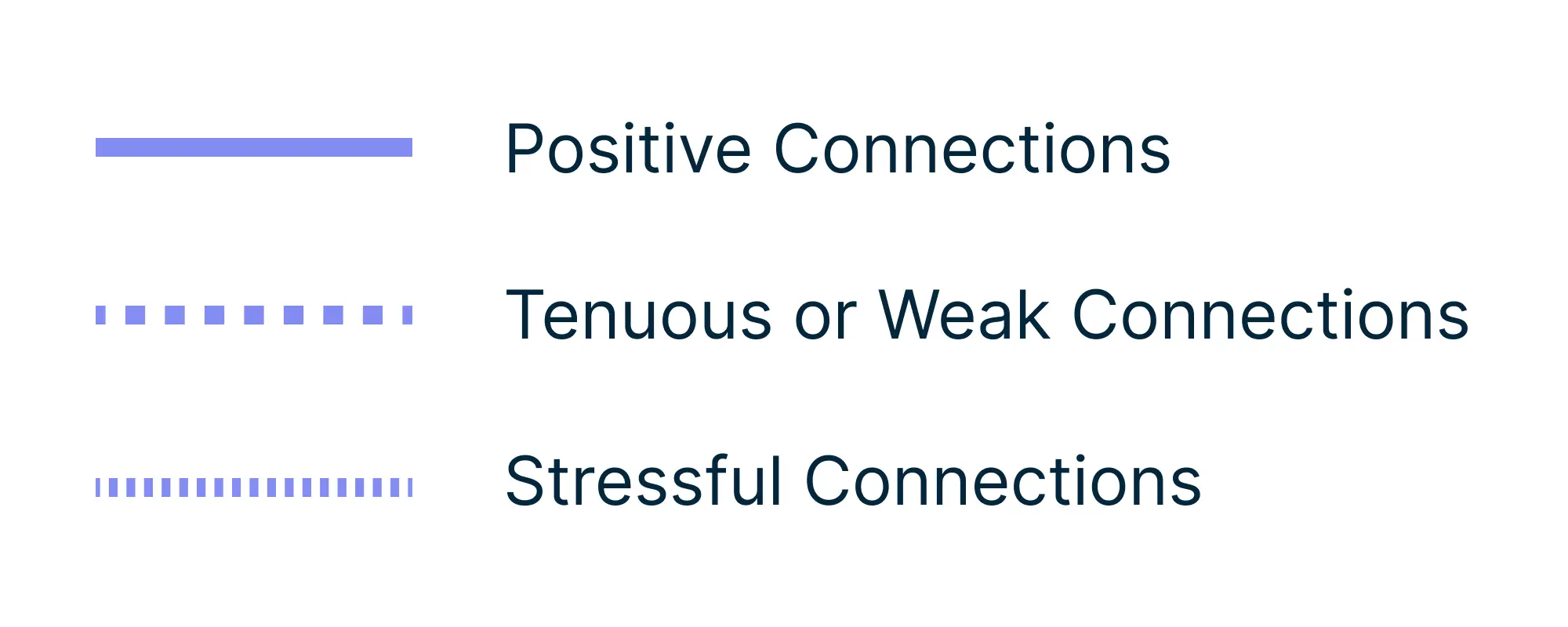
You can always define the type of connection represented in your key or legend. The most commonly used symbols are shown below.
- Arrows - shows the energy flow
- Line thickness - intensity
Who can use the Ecomap template?
- Social workers
- Medical and psychological professionals
- Families or individuals who need to understand their family social environment and relationships better
- Managers or team leads in organizations to better understand their employees
Explore Relationships Effectively with these Creately Tools and Templates


